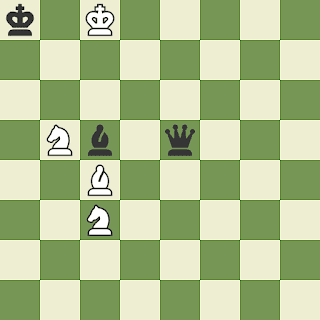Cinco candidatos, Aldo, Baldo, Caldo, Delcio e Elcio participam da última etapa de um processo seletivo no qual o avaliador entrevista cada um deles, atribuindo-lhes notas de 0 a 100. As notas atribuídas aos cinco candidatos foram 71, 76, 80, 82 e 91, não necessariamente nessa ordem.
Em uma planilha de cálculo, os nomes dos candidatos estavam em ordem alfabética. Ao inserir as notas de cada candidato ao lado de seu nome, a planilha calculava automaticamente a média das notas já inseridas. O avaliador percebeu que a média, após cada inserção, não se mantinha constante, mas era sempre um número inteiro.
Nessas condições, o candidato que obteve a maior nota foi
A) Aldo.
B) Baldo.
C) Caldo.
D) Delcio.
E) Elcio.
Eu fiz isso:
Números ímpares 71 e 91
Números pares 76, 80 e 82
71 + 91 = 162
162 + 76 = 238
162 + 80 = 242
162 + 82 = 244
76 + 80 = 156
156 + 71 = 227
156 + 82 = 238
156 + 91 = 247
76 + 82 = 158
158 + 71 = 229
158 + 80 = 238
158 + 91 = 249
249 + 71 = 320
320 + 80 = 400
80 + 82 = 162
162 + 71 = 233
162 + 76 = 238
162 + 91 = 253
76 ou 82, 76 ou 82, 91, 71 e 80.
A soma de dois números pares ou impares, dá um número par, e a soma de um número par com um ímpar, dá um número impar.
Eu somei somente números pares com pares e números ímpares com impares.
A primeira e a terceira soma teriam que ser pares.
Depois eu somei com os outros números e procurei as somas que são múltiplos de 3.
A segunda soma teria que ser múltiplo de 3.
Só teve uma soma. Essa soma era ímpar. Eu somei com o outro número ímpar e depois somei com o número que sobrou.
Na única sequência que a média é sempre um número inteiro, Caldo tirou a maior nota.
A resposta oficial é Caldo.
Nessa questão tem uma falha. O avaliador percebeu que a média, após cada inserção, não se mantinha constante.
76 ou 82
158 / 2 = 79
249 / 3 = 83
320 / 4 = 80
400 / 5 = 80
A média foi 76 ou 82, 79, 83, 80 e 80.
A média se manteve constante durante a quarta e a quinta inserção.
Eles terem escrito que a média, após cada inserção, não se mantinha constante, tornou o enunciado errado.
Esses jumentos não tinham que terem escrevido que a média, após cada inserção, não se mantinha constante.
A) Aldo.
B) Baldo.
C) Caldo.
D) Delcio.
E) Elcio.
Eu fiz isso:
Números ímpares 71 e 91
Números pares 76, 80 e 82
71 + 91 = 162
162 + 76 = 238
162 + 80 = 242
162 + 82 = 244
76 + 80 = 156
156 + 71 = 227
156 + 82 = 238
156 + 91 = 247
76 + 82 = 158
158 + 71 = 229
158 + 80 = 238
158 + 91 = 249
249 + 71 = 320
320 + 80 = 400
80 + 82 = 162
162 + 71 = 233
162 + 76 = 238
162 + 91 = 253
76 ou 82, 76 ou 82, 91, 71 e 80.
A soma de dois números pares ou impares, dá um número par, e a soma de um número par com um ímpar, dá um número impar.
Eu somei somente números pares com pares e números ímpares com impares.
A primeira e a terceira soma teriam que ser pares.
Depois eu somei com os outros números e procurei as somas que são múltiplos de 3.
A segunda soma teria que ser múltiplo de 3.
Só teve uma soma. Essa soma era ímpar. Eu somei com o outro número ímpar e depois somei com o número que sobrou.
Na única sequência que a média é sempre um número inteiro, Caldo tirou a maior nota.
A resposta oficial é Caldo.
Nessa questão tem uma falha. O avaliador percebeu que a média, após cada inserção, não se mantinha constante.
76 ou 82
158 / 2 = 79
249 / 3 = 83
320 / 4 = 80
400 / 5 = 80
A média foi 76 ou 82, 79, 83, 80 e 80.
A média se manteve constante durante a quarta e a quinta inserção.
Eles terem escrito que a média, após cada inserção, não se mantinha constante, tornou o enunciado errado.
Esses jumentos não tinham que terem escrevido que a média, após cada inserção, não se mantinha constante.







